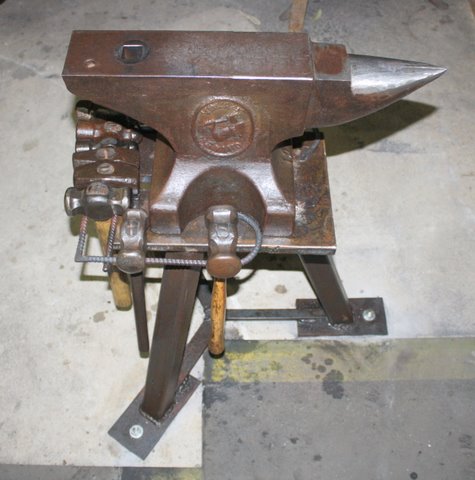
 If you’re buying a used anvil, check around for dents or cracks. A blacksmithing anvil should be big enough and heavy. Do adequate research prior to making a decision, since most anvils can be a bit pricey for shipping costs. In fact, jewelry anvils are often small enough that you can fit them in the palm of your hand. Contrary to popular belief, not all anvils have to be massive in size. Always make sure that you choose the right size. When you’re choosing an anvil, try tempered, hardened steel. Even the blunt impact of a hammer through the item that you’re working on would be enough to shatter most materials. It’s no secret that you’ll miss a few swings here and there. A good anvil should be tough and able to withstand a beating. Here are the five features that you’ll always find in a good anvil: If you’re new to blacksmithing or you simply want to upgrade your current setup, you’re in the right place. With so many years of expertise, you’d be able to understand how many hobbyists and workers have got it down to a science, including the design of an anvil. What to remember when buying a good anvilĪnvils have been part of blacksmithing and other jobs for centuries.
If you’re buying a used anvil, check around for dents or cracks. A blacksmithing anvil should be big enough and heavy. Do adequate research prior to making a decision, since most anvils can be a bit pricey for shipping costs. In fact, jewelry anvils are often small enough that you can fit them in the palm of your hand. Contrary to popular belief, not all anvils have to be massive in size. Always make sure that you choose the right size. When you’re choosing an anvil, try tempered, hardened steel. Even the blunt impact of a hammer through the item that you’re working on would be enough to shatter most materials. It’s no secret that you’ll miss a few swings here and there. A good anvil should be tough and able to withstand a beating. Here are the five features that you’ll always find in a good anvil: If you’re new to blacksmithing or you simply want to upgrade your current setup, you’re in the right place. With so many years of expertise, you’d be able to understand how many hobbyists and workers have got it down to a science, including the design of an anvil. What to remember when buying a good anvilĪnvils have been part of blacksmithing and other jobs for centuries. 
Throughout this post, you’ll learn the following information: It should be seemingly impossible to move by the force of a swinging hammer, and you shouldn’t notice any dents or chips over time. That being said, you should know the key attributes to keep an eye out for before you purchase your first one.Ī good anvil should be strong and durable, long-lasting, heavy, and the perfect size for all of the tools that you’ll be working with. They allow you to hold and shape your projects to look and feel as they should. Anvils are perhaps the most useful tool in blacksmithing.






 0 kommentar(er)
0 kommentar(er)
